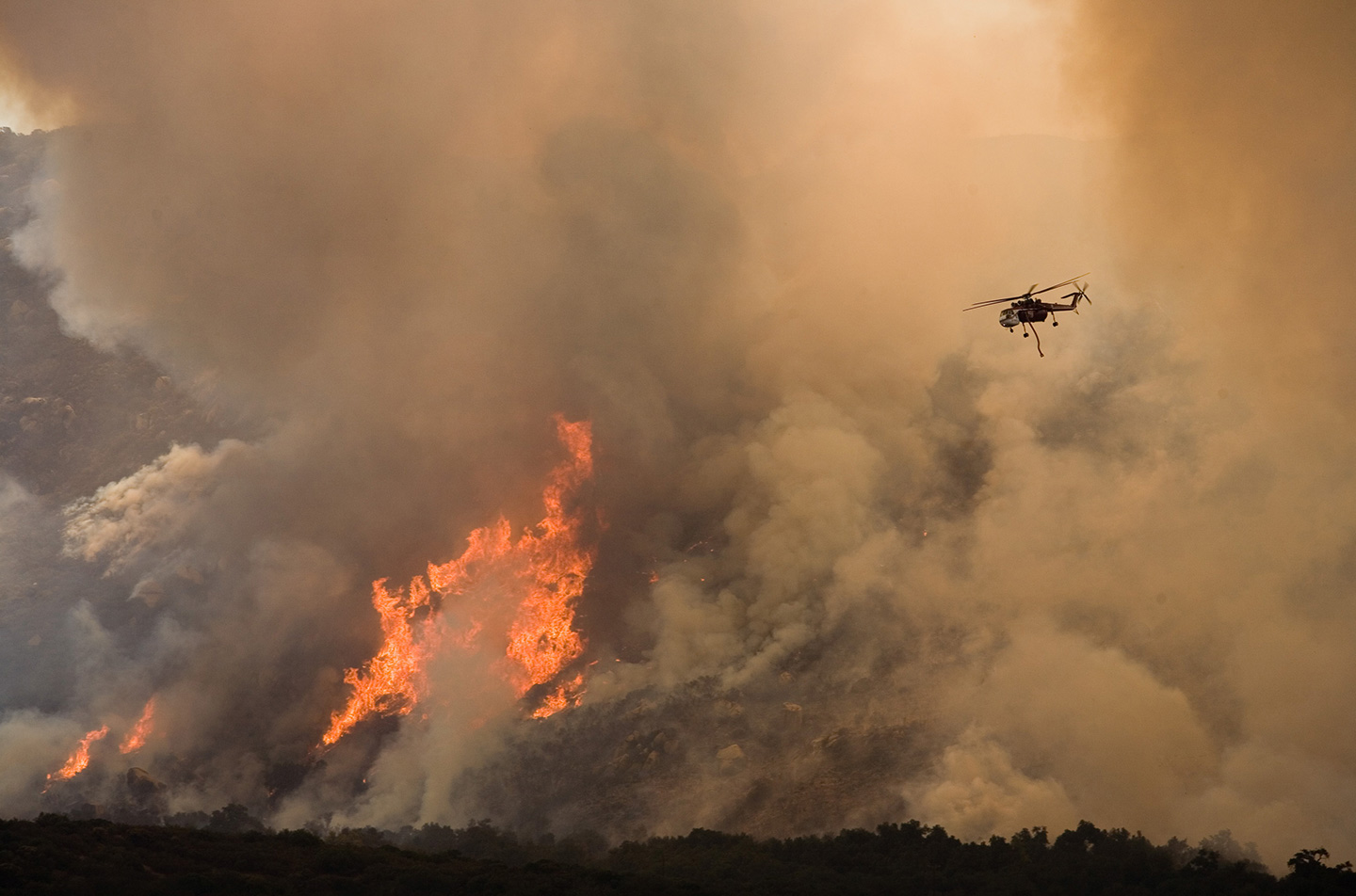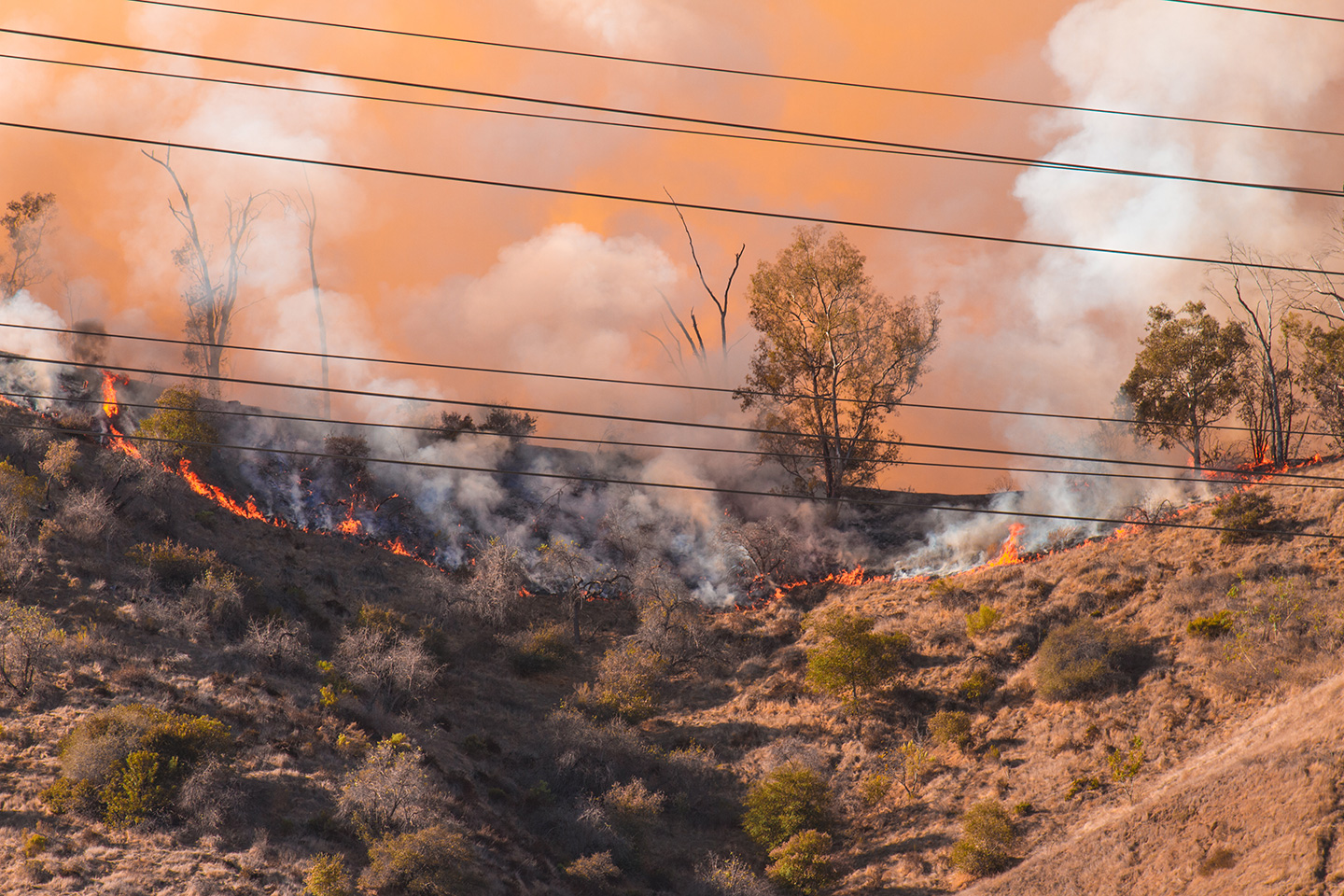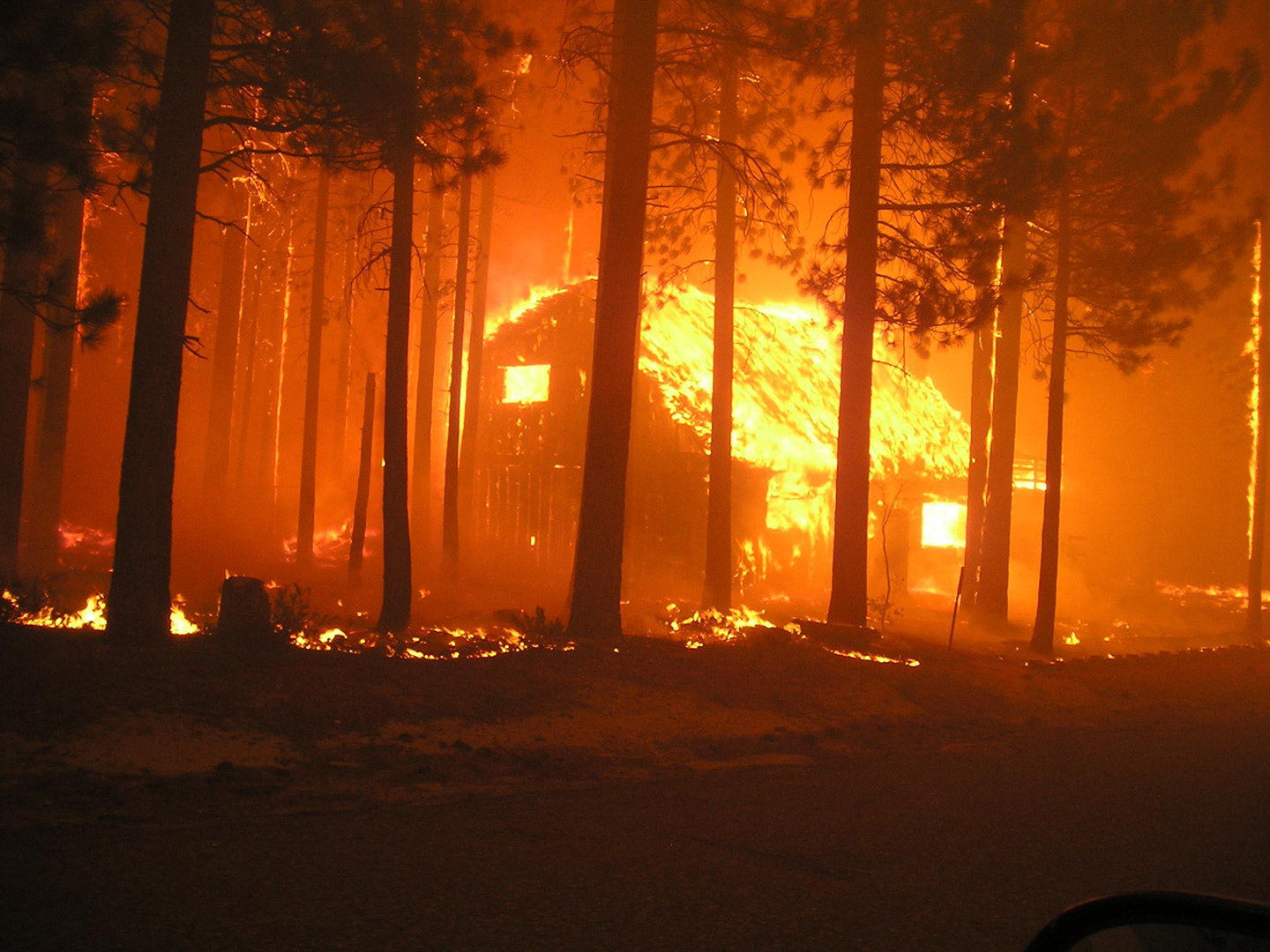Now more than ever, communities in or near the wildland-urban interface (WUI) need to prepare themselves for the dangers of wildfires as the threats from climate change continue to increase. There are several strategies that can be implemented at the homeowner and community level to protect homes from wildfires. Currently, three methods of fire prevention are dominating the fire management community, including ignition resistant construction, defensible space planning, and prescribed burning.
Combining Two Essential Fire Mitigation Strategies
Ignition resistant construction, also known as construction hardening, is the process of adding fire retardant design and materials to a structure. This includes implementing:
- Fire-resistant roofing
- Fire-resistant siding
- Fire-rated windows and doors
- Mesh vent covers

Defensible space planning, on the other hand, is the process of establishing buffer zones around the house to separate the structure and the fire spread from surrounding vegetation. To achieve this, homeowners should clear vegetation and other fuels within five feet of their homes and other structures. They can also remove invasive species and replace with native plants or with fire-resistant, drought-tolerant plant types on their property, prune trees, and regularly remove tree litter from gutters as well as from around their homes.
Typically, these two methods of fire mitigation have been looked at as separate approaches. Today, the wildfire mitigation industry is working with these two approaches in concert with one another. For example, using the defensible space approach, you can help curtail flame lengths, but it doesn’t stop embers from landing on and potentially igniting your home, which is where ignition-resistant construction comes in. Using these two mitigation methods together should help increase the chances of a home surviving a wildfire.

There are three primary support systems for these fire mitigation approaches. One is the Firewise program, which encourages local solutions for safety by involving homeowners in taking individual responsibility for preparing their home from wildfire. The program, which is administered by the National Fire Protection Association (NFPA) and co-sponsored by the USDA Forest Service, U.S. Department of Interior, and the National Association of State Foresters, provides specific criteria for communities regarding wildlife preparedness. Communities that meet the criteria can be designated as Firewise Communities, which currently can result in insurance premium discounts to some homeowners in ten states. Communities can also look to FEMA’s Building Resilient Infrastructure and Communities (BRIC) grant program, the Hazard Mitigation Grant Program (HMGP), or the HMGP Post-Fire program to fund wildfire resilience projects.
Now more than ever, communities in or near the wildland-urban interface (WUI) need to prepare themselves for the dangers of wildfires as the threats from climate change continue to increase.
Laurel McGinley, Jessica Fleck, and Nicole Gough
The Reintroduction of Prescribed Burn
A prescribed burn is a planned fire that is implemented by trained professionals to reduce hazardous fuel loads. While potentially misunderstood, in addition to fire prevention purposes, the process can help manage landscapes and restore natural habitats and biomes.
Prescribed burning is a component of fire management that hasn’t been utilized by government agencies in the past. Originally a cultural practice of Native American tribes all throughout the U.S., government agencies have not supported the practice due to rare cases where fires have gotten out of control, such as the Cerro Grande fire in New Mexico in 2000, which led to significant losses and subsequent lawsuits.

Recent studies have suggested that the benefits of prescribed burns outweigh the potential dangers. The adverse impacts to small communities in the sphere of the burn are generally minimal compared to the widespread impacts on a population from a wildfire. Prescribed burns are used frequently in the Southeast, including the states of Florida, Georgia, and Alabama. These states have been able to use the strategy due to topography, atmospheric conditions, public perception, and state regulatory requirements. In general, prescribed burns can be more controlled in flat regions of the Southeast than in mountainous parts of the West, where fire can travel uphill quickly. Weather in the West can change quickly, which can make finding days to conduct prescribed burns difficult. States in the Southeast have been conducting prescribed burns for decades, so people are more accustomed to them than in the West, and, according to NPR, 11 southern states have established certification programs for burn managers. Each state has its own regulations that govern the use of prescribed burn; those in the Southeast tend to be less restrictive than those in the West. However, as wildfires in the West become more frequent and destructive, western states are beginning to re-evaluate the use of prescribed burn as a potential wildfire mitigation technique.
Altogether, these three fire mitigation strategies can be used by communities across the country. We look forward to supporting communities along the way to protect against the dangers of wildfires through our team’s multi-disciplined fire mitigation consulting approach to assist with planning, training, and identifying opportunities for grant funding.